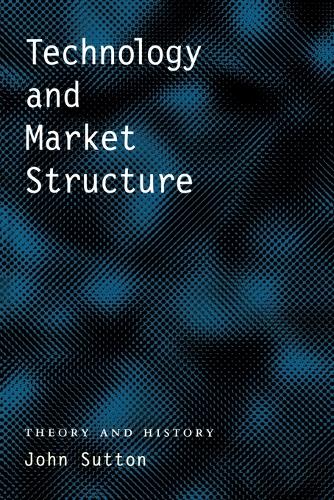
Technology and Market Structure: Theory and History
(Paperback)
Publishing Details
Technology and Market Structure: Theory and History
By (Author) John Sutton
MIT Press Ltd
MIT Press
26th January 2001
United States
Classifications
Tertiary Education
Non Fiction
Industry and industrial studies
338.064
Physical Properties
Paperback
692
Width 152mm, Height 229mm, Spine 33mm
907g
Description
Traditionally, the field of industrial organization has relied on two unrelated theories - the cross-section theory and the growth-of-firms theory - to explain cross-industry differences in concentration and within-industry skewdness. The two approaches are based on very different mathematical structures. In this text, John Sutton unifies the two approaches through a theory that rests on three simple principles. The first two, "survivour principle" that says that firms will not pursue loss-making strategies, and an "arbitrage principle" that says that if a profitable opportunity is available, some firm will take it, suffice to define a set of possible outcomes. The third, the "symmetry principle", says that the strategy used by a new entrant into any submarket depends neither on the entrant's identity nor on its history in other submarkets. This allows reseachers to bring together the roles of strategic interactions and of independence effects. The result is that the considerations motivating the cross-section tradition and those motivating the growth-of-firms tradition both drop out within a single game-theoretic model. This book follows Sutton's "Sunk Costs and Market Structure" pubished by MIT Press in 1991.
Reviews
"The book is a joy to read for its lucidity and is a model for integrating theoretical work of the highest quality with applied studies of particular technologies." - Qing Wang and Nick von Tunzelmann, The Times Higher Education Supplement"
Author Bio
John Sutton is the Sir John Hicks Professor of Economics at the London School of Economics. He is currently a Visiting Professor of Economics at Harvard University.
